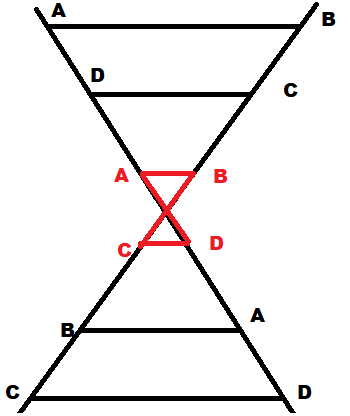I'm sure this is easy/known, but I'm not hitting an appropriate search term for finding the answer and the coffee hasn't kicked in enough to come up with it myself:
Let $T$ be a simplicial 2-complex homeomorphic to the sphere with $n$ vertices. $\mathbb{R}^{3n}$ gives us a configuration space for $T$ of all possible realizations of $T$ as a polyhedron in $\mathbb{R}^3$. Take $C\subset \mathbb{R}^{3n}$ to be the configuration space of all realizations of $T$ as a convex polyhedron.
We might ask, is $C$ a convex set? Which is akin to asking if we have two realizations $P_0\in C$ and $P_1\in C$, both convex, and we linearly interpolate between the two in $R^{3n}$, giving us a continuous family of polyhedra $P_t$ for $t\in[0,1]$, is $P_t\in C$ for all $t\in[0,1]$? It seems to me that the answer here is no, because we can do something like simply rotate $P_0$ around some axis through the point at the average of its vertices by $\pi$ and then do this interpolation and it seems like the polyhedron will admit of some self-intersections at intermediate values of $t$ for lots of examples (though my intuition may be off here, I haven't actually constructed an example where this happens).
If I'm wrong about my intuition above, then I'm interested in why, and if I'm right, then I'm further interested in the following questions.
Question 1: What if we select a face $i_0j_0k_0$ of the polyhedron $P_0$ and require that in $P_1$, vertex $i_1 = i_0$ (so that $i_t$ is constant in $P_t$), $j_1$ lies on the ray $i_0 j_0$ (so that the segment $i_t j_t$ is just stretching in $P_t$ with one side fixed), and $k_1$ lies in the plane supporting $i_0 j_0 k_0$ such that the orientation of triangle $i_1 j_1 k_1$ is the same as $i_0 j_0 k_0$ (this way the triangle $i_t j_t k_t$ remains coplanar throughout the motion and doesn't flip orientation). Let $C_{i_0j_0k_0}\subset C$ be the configuration space with these additional requirements. It feels like $C_{i_0j_0k_0}$ is convex. Is it? Does this appear anywhere in the literature? Update: The answer here is no. I can construct examples.
Question 2: if the answer to question 1 is still no, it (again) feels like there ought to be a way to interpolate between two convex polyhedra with the same combinatorics in such a way that all intermediate polyhedra are convex. If there is, is there a different way of parametrizing the polyhedra such that the appropriately defined configuration space is convex, meaning we can interpolate linearly the parameters between two realizations while all intermediate polyhedra are also convex realizations?

